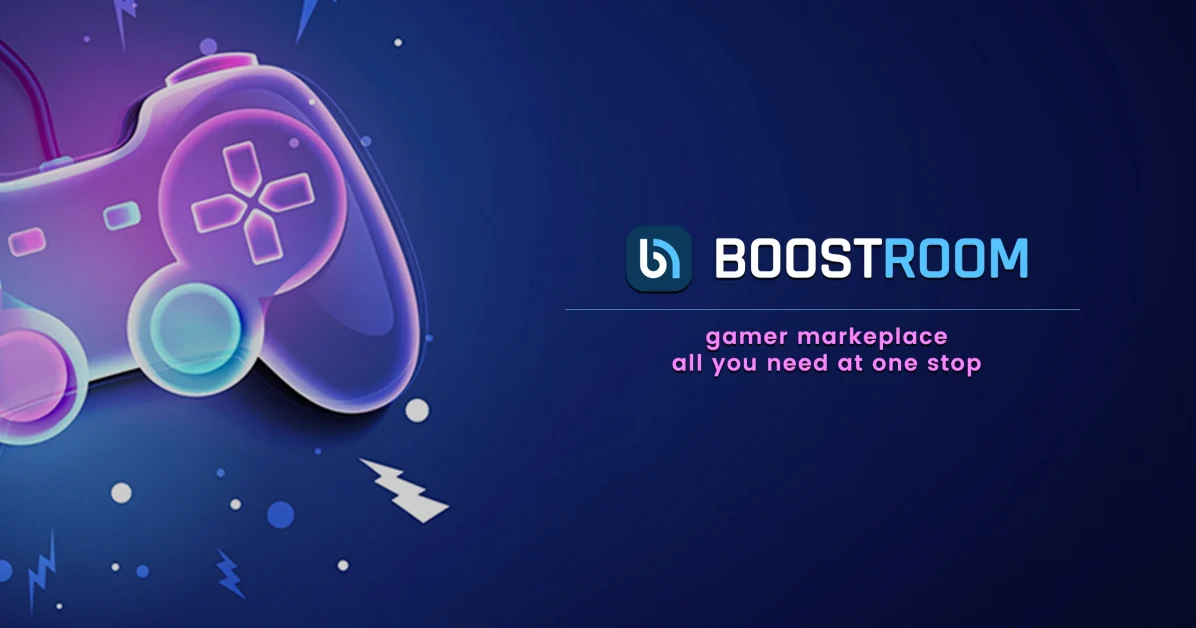Entering the world of gamer marketplaces as a new seller can seem overwhelming, but with the right approach, it can also be a rewarding and profitable venture. Whether you’re selling rare in-game items, boosting services, or accounts, these platforms provide an opportunity to monetize your gaming knowledge and assets. In this guide, we’ll walk you through the essential steps for successfully selling in a marketplace for gamers, focusing on tips that can help you get started and grow your sales.
If you’re just beginning your journey as a seller in a gamer marketplace, platforms like Boostroom may provide the perfect environment to list and sell your products. However, no matter where you decide to sell, there are important principles that can help you succeed in any gamer marketplace.
1. Understanding the Marketplace and Its Audience
Before you start selling, it’s crucial to understand the platform you’re using and its audience. Every gamer marketplace has its own set of rules, product categories, and customer expectations. Getting familiar with these elements is key to positioning your products effectively.
Know the Types of Products You Can Sell
Gamer marketplaces generally cater to specific types of digital products. These can include:
- In-game items and skins: Rare skins, weapons, or other collectible items are highly sought after in many gaming communities.
- Game accounts: Some sellers offer leveled-up accounts with rare achievements or skins.
- Boosting services: Gamers looking to advance their rank or level may purchase services that help them achieve their goals.
- Game keys: Digital codes for games or expansions are also common offerings in these marketplaces.
If you’re selling on a marketplace for gamers like Boostroom, understanding what products are in demand can help you tailor your listings. It’s helpful to do a bit of research into what buyers are looking for and what types of products are popular on the platform. You can also check competitor listings to understand pricing, item descriptions, and the type of audience engaging with those products.
2. Setting Up Your Seller Profile
Your seller profile is one of the most important aspects of your gamer marketplace presence. It’s the first thing buyers will see when they’re deciding whether or not to purchase from you, so you want to make sure it’s appealing and trustworthy.
Create a Professional Profile
Start by creating a professional and informative seller profile. Include the following:
- Profile Picture: A clear and professional photo can help buyers feel more comfortable purchasing from you.
- Bio: Provide a brief description of who you are, what you’re selling, and your experience. Transparency helps build trust with potential buyers.
- Seller Ratings and Reviews: If possible, collect feedback from your first few customers. Positive reviews are invaluable for attracting new buyers.
Add Contact Information
Make it easy for buyers to get in touch with you if they have questions about your products or services. This can be an email address or a direct messaging feature through the gamer marketplace. Responding quickly to inquiries will enhance your reputation as a reliable seller.
3. Creating High-Quality Listings
When you’re selling in a gamer marketplace, your product listing is your storefront. It should be detailed, accurate, and visually appealing to attract buyers. Here are some tips for creating high-quality listings that will stand out:
Write Clear and Accurate Descriptions
A product description should be clear, concise, and provide all the necessary information. Avoid vague or misleading statements. Be specific about what you’re selling and why it’s valuable. Include details such as:
- The item’s rarity, condition, and any unique features
- If you’re offering a boosting service, explain the process and time frame
- The level, stats, or achievements of the account (if relevant)
For example, if you’re selling an in-game skin, describe its appearance, rarity, and any special traits. If you’re offering a rank boost, specify the starting rank and the end rank the buyer can expect.
Use High-Quality Images
Good images can significantly boost your listing’s attractiveness. Clear, high-quality images of the item you’re selling will help buyers get a better idea of what they’re purchasing. If you’re selling an account, you might consider providing screenshots of the account’s level, stats, or in-game appearance. Make sure the images are high resolution and free from watermarks or distractions.
Set a Competitive Price
Pricing is critical to attracting buyers. If your prices are too high, potential customers may look elsewhere. If they’re too low, you risk undervaluing your products. Research what similar items are selling for and set a competitive price based on market trends. Offering a slightly lower price than competitors can help you stand out, but make sure it’s still reasonable for the value you’re providing.
4. Marketing Your Products
In a crowded gamer marketplace, you’ll need to find ways to market your products to potential buyers. Here are some strategies that can help you get more visibility:
Use Keywords Effectively
Using relevant keywords in your product titles and descriptions is crucial for visibility. Keywords like “rare skins,” “game account,” “level boost,” and specific game names will help your listings show up in search results. Make sure the keywords are relevant to the item or service you’re selling.
For example, if you’re selling a rare skin for a popular game, your title might look something like: “Rare Legendary Skin for Fortnite – Level 100 Account Included.” This title is specific and optimized for search engines within the gamer marketplace.
Offer Discounts and Promotions
To attract new buyers, consider offering promotions such as discounts, bundle deals, or free add-ons. A well-timed promotion can help increase the visibility of your listings and encourage more purchases.
For example, if you’re new on the marketplace for gamers, you might offer a 10% discount for the first few buyers. This can help you get initial feedback and build trust with your audience.
Engage with Your Audience
Many gamer marketplaces have community features that allow sellers to engage with potential buyers. Participate in discussions, answer questions, and share tips or insights related to your products. Engaging with the community can help you build your reputation and attract more customers.
5. Providing Excellent Customer Service
Good customer service is essential for building a loyal customer base. Always strive to exceed customer expectations by being responsive, polite, and helpful.
- Respond Quickly: Try to respond to buyer inquiries as quickly as possible. Delayed responses can discourage potential buyers.
- Be Transparent: If there’s an issue with the product or service you’re providing, be upfront about it. Honesty goes a long way in building trust.
- Follow Up: After a transaction, consider following up with the buyer to make sure they are satisfied with their purchase. Happy customers are more likely to leave positive reviews and recommend you to others.
6. Building a Strong Reputation
In a gamer marketplace, your reputation is key to long-term success. Buyers tend to trust sellers with positive ratings and reviews. Always aim to provide a great experience for your customers to ensure that they leave positive feedback.
- Ask for Reviews: After a successful transaction, encourage your buyers to leave a review. Positive reviews can increase your visibility and credibility in the marketplace.
- Build Relationships: Treat every buyer with respect and professionalism. Repeat customers can be a valuable asset to your business.
Conclusion
Selling in a gamer marketplace like Boostroom can be a lucrative venture for anyone passionate about gaming. By understanding your marketplace, creating high-quality listings, setting competitive prices, marketing your products, and providing excellent customer service, you can build a successful online business.
The key is to be patient, responsive, and committed to offering value to your customers. Whether you’re selling rare in-game items, game accounts, or boosting services, following these steps will help you navigate the world of marketplaces for gamers with confidence.




